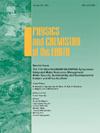卡拉湖(希腊塞萨利盆地东部)附近地表裂缝和地面沉降的地球物理调查
IF 3
3区 地球科学
Q2 GEOSCIENCES, MULTIDISCIPLINARY
引用次数: 0
摘要
过去四十年间,希腊东部塞萨利盆地发生了多起地裂缝,给该地区的村庄造成了破坏。对该地区的一些研究指出,过度抽取地下水是地裂缝发生的主要原因,由于含水层水位下降,导致沉积物压实。在本文中,我们描述了一项联合地球物理勘测的结果,该勘测旨在确定该盆地的地下状态以及造成地表裂缝存在的确切原因。勘测的重点部分包括用于深入调查的重力测量,以及现有和已提交的地质电学和电磁学数据。一些钻孔数据也用于地球物理解释的校准。该地区的高山基底主要由变质岩组成,如大理岩、云母片岩和片麻岩,被厚厚的流积层和冲积层覆盖。我们绘制了多幅构造图,以确定与断层带有关的横向密度变化,并绘制了地质建模的解释性剖面图。高山基岩的埋藏深度相对较深,西北-东南走向的大型反斜线隆起,将盆地分为两部分。在东部地区,由于含水层的存在,预计在压实过程中起重要作用的流积地层仅位于该反斜线以西。在卡拉老湖所在的东部地区,冲积层直接位于高山基底上,深度较小。这种复杂的机制是造成沉积物压实差异和地表下沉的原因。本文章由计算机程序翻译,如有差异,请以英文原文为准。
Geophysical investigation of the ground fissures and ground subsidence near Karla lake (eastern Thessaly basin, Greece)
Ground fissures have occurred in the last four decades across the eastern Thessaly basin (Greece) resulting in damage to the villages of the area. Several studies for the area refer to the over-pumping of ground water as the main reason for their occurrence, causing sediment compaction due to the reduction of the aquifer level. In this paper, we depict the results of a joint geophysical survey trying to determine the subsurface regime of the basin and the exact reasons contributing to the existence of the ground fissures. The focal part of the survey includes gravity measurements for deeper investigation, combined with existing and already presented geoelectrical and electromagnetic data. Several borehole data have also been used for the calibration of the geophysical interpretation. The differential GNSS data of the gravity campaign revealed the ground subsidence of the area, reaching up to 9.16 m. The alpine basement of the area is comprised mainly of metamorphic rocks, such as marbles, mica schists and gneiss-schists, covered by thick fluviοterrestrial and alluvial deposits. Several structural maps were generated in order to delineate the lateral density variations that could be related to fault zones along with the interpretive sections for geological modelling. The alpine bedrock was adumbrated in relatively great depths, with a large anticline of NW-SE direction, rising and separating the basin in two parts. In the east part, the fluvioterrestrial deposits, which are expected to play an important role in the compaction due to their water aquifer, are located only west of this anticline. At the east part, where the old lake Karla was hosted, the alluvial deposits lay directly on the alpine basement in smaller depths. This complicated regime is responsible for differential sediment compaction and the ground subsidence of the surface.
求助全文
通过发布文献求助,成功后即可免费获取论文全文。
去求助
来源期刊

Physics and Chemistry of the Earth
地学-地球科学综合
CiteScore
5.40
自引率
2.70%
发文量
176
审稿时长
31.6 weeks
期刊介绍:
Physics and Chemistry of the Earth is an international interdisciplinary journal for the rapid publication of collections of refereed communications in separate thematic issues, either stemming from scientific meetings, or, especially compiled for the occasion. There is no restriction on the length of articles published in the journal. Physics and Chemistry of the Earth incorporates the separate Parts A, B and C which existed until the end of 2001.
Please note: the Editors are unable to consider submissions that are not invited or linked to a thematic issue. Please do not submit unsolicited papers.
The journal covers the following subject areas:
-Solid Earth and Geodesy:
(geology, geochemistry, tectonophysics, seismology, volcanology, palaeomagnetism and rock magnetism, electromagnetism and potential fields, marine and environmental geosciences as well as geodesy).
-Hydrology, Oceans and Atmosphere:
(hydrology and water resources research, engineering and management, oceanography and oceanic chemistry, shelf, sea, lake and river sciences, meteorology and atmospheric sciences incl. chemistry as well as climatology and glaciology).
-Solar-Terrestrial and Planetary Science:
(solar, heliospheric and solar-planetary sciences, geology, geophysics and atmospheric sciences of planets, satellites and small bodies as well as cosmochemistry and exobiology).
 求助内容:
求助内容: 应助结果提醒方式:
应助结果提醒方式:


